PRODUCT LIST
How does a Centralized UPS Management System improve your efficiency?
Due to the popularity of networks connecting UPSs to internet has become easier than before. It would help if an IT manager and staff could manage all of the UPSs through a centralized management system. This article will discuss how to manage all of the UPSs in one system and the benefits of centralized UPS management.
The advantages of centralized UPS management
To protect mission critical operations, enterprises invest in UPSs as a solution that ensures the continuity of business operations. But simply installing UPSs is not the end of the solution. Managers need to know how to manage and control these devices, and make sure they are operated properly. A centralized UPS management system provides the benefit of immediately knowing the status of the UPSs including UPS capacity and where the UPSs are located. Managers can also know the load status, when it is necessary to change batteries, and the operation status of each UPS. If all the information can be collected entirely within one program and displayed in an easy-to-use graphical interface with a common alarm, managers can easily manage some tens or even hundreds of UPSs through a centralized UPS management system. Compared to inspecting each UPS around the organization one by one, centralized monitoring is more efficient.
Connecting UPSs for centralized management
There are two approaches to managing all of the UPSs in one system:
1. Connect UPSs to a single PC through a serial port:
Install a multiple port module to extend the RS232 port in your computer or cascade the UPSs through the RS485 then connect to the computer’s RS232 port. The RS485 is ideal for connecting UPSs long distance but the polling time varies with the number of UPSs—the more UPSs connected, the longer the polling time needed.
2. Collect UPS information through the network:
To post UPS information to the network, we can insert an SNMP card or install UPS software to bridge the UPS data to the network. Centralized management software must have built-in capability to communicate with both the UPS software and the SNMP card. Once the numbers of a network node get bigger, the network traffic becomes a key factor in your management system. To prevent network traffic jams, the management software should be able to adjust the polling time to reduce sending network packets. After all, keeping your business going smoothly is the first priority.

Increase efficiency via centralized UPS management software
Managers can use advanced planning through centralized UPS management software to take action to protect operations as power events occur. After an event, the management software can also help track and identify the failed UPS and analyze the power incident. Managers are informed and provided with sufficient information to immediately deal with the equipment protected by the UPSs.
Managers can also prioritize UPS tasks based on UPS status, model, load, battery and information provided by the UPS management software. For example, mangers can know which UPS is loaded over 80%, and this will be a reminder to purchase a UPS with larger capacity; when a power outage occurs and the UPS battery capacity is lower than 30%, shutdown procedures are initiated. The benefit of centralized UPS management software is not only to protect critical operations, but also to help reduce the waste of human resources and increase efficiency.
More information about Delta UPS software and connectivity can be found at:
Delta UPS Software Center











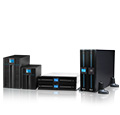

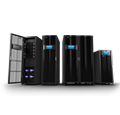

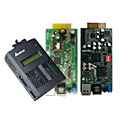



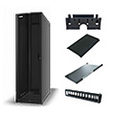
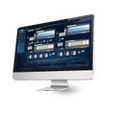













.gif)

.gif)
